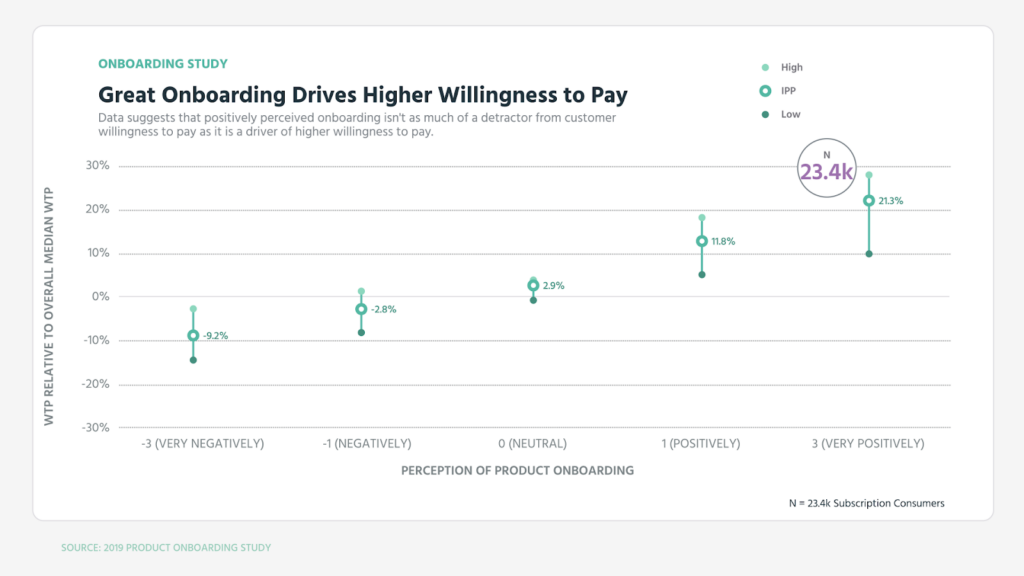3 steps for frictionless customer onboarding
BLOG POST SEPT 4, 2023 | 5 MIN

Contents
Companies often take too long to realize that no process is as crucial for customer acquisition, retention, and business growth strategy as the onboarding experience.
That’s right, this small and frequently overlooked process can be the difference between success and failure, whether you are a small e-commerce or a large corporation.
How long does it take you to form an impression about a person? A series of experiments conducted by Princeton psychologists reveal that it takes a tenth of a second, and longer exposures don’t significantly alter those impressions.
The same concept applies to many other situations, you are constantly forming first impressions in all your interactions, whether with people or businesses. If your users find a long and content-heavy experience, and a product hard to understand, chances are that most of them will be turned off by the experience.
Did you know that 70% of customers completely abandon the onboarding process if it takes longer than 20 minutes? And while businesses in the United States lose $1.6 trillion per year due to customer churn, another research shows that 90% of consumers are willing to spend more with companies that personalize the customer experience.
The term User Experience has only become mainstream in the past 20 years, after the cognitive psychologist Donald Norman joined Apple in the early 1990s, right at the beginning of Web 1.0. To this day, some may still be oblivious to the concept, but as you can see, this unfamiliarity comes at a high cost.
What is digital onboarding?
The customer onboarding process is a set of actions thoughtfully arranged to introduce the product to the users and increase their perception of value at the first contact with it.
For your business, this is also the stage where you have the chance to find out, first-hand, who the person joining your platform or trying to use your product is. When done right, this stage is your best resource for filtering potential fraud attempts before they happen. Furthermore, you can add compliance and error reduction to the list of benefits.
The 3 key steps to a successful onboarding
Now that you fully understand what digital onboarding is and why it is crucial to any business out there, it’s time for the fun part. Let’s break this process down into simple steps, so you never deliver anything below an amazing user experience again.
1. Identify the essential, eliminate the rest
In 2020, almost two in every three customers willing to open a bank account remotely abandoned the onboarding process due to bad user experience, revealed a report by Signicat.
Whether you are onboarding a new user or a new customer, you must never ask for more information than you need at that first contact. By doing so, you prolong the process and risk them giving up on your platform. At the same time, be mindful of how much information about your product you throw at the user, so as not to overwhelm them.
Look at how Slack, one of the most popular team-messaging apps out there, excels at explaining itself to new users by giving them an interactive walkthrough of its product through useful tips instead of an exhaustive tour for every new feature released.
For example If you have a fintech, it makes sense to ask for personal and financial information to outline whether or not a certain customer qualifies for a loan. However, you don’t necessarily need to ask for all of the data at once. Instead, try giving more access to your platform as they input more information.
2. Customize and automate the process
In a technology-centered world, with thousands of services just a click away, how long are you willing to wait to access a service before switching up to the next one on the list?
Digital onboarding is all about speed. Let’s say you have the topic of prioritizing information nailed down and the customer takes no more than 3 minutes to sign up to your bank, e-commerce, or gig platform. That’s amazing!
Yet, users still have to wait from roughly an hour to 3 business days to actually be allowed into your product, because you are performing manual verifications… Wait, what?!
– Artificial Intelligence is a precious resource
Manually onboarding customers might work for a while if you are just starting and have a low user volume, but it not only costs you more money, requires more time, and more people dedicated to repetitive processes, it also has a huge impact on the customer experience, which echoes into your revenue.
Meanwhile, implementing an automatic onboarding experience with Artificial Intelligence (AI) means improving almost every aspect of your operation and revitalizing the customer experience:
Cost reduction and better UX: AIs can synthesize, process, and analyze massive amounts of data in a much faster and more precise way than any human, improving the user experience by turning the waiting time to be verified from hours into minutes. In addition, it takes repetitive tasks such as validating data off your hands and works 24/7 without getting tired.
Risk reduction: because of its high accuracy levels, AI can discover patterns that would otherwise go unnoticed by a person – thus, reducing the risk of fraud by spotting unwanted profiles before they get past the front door.
Accelerated growth: as your team shifts focus to more strategic tasks, your business gains extra fuel to grow in less time.
– Customization is your best friend
Customizing the onboarding experience means looking at your customers’ needs and reducing friction by removing any non-essential steps between the signup and finally accessing your product. It is also making sure that you get the necessary information to trust and offer each user the best possible service.
Now, imagine if Uber asked everyone on the platform to upload the documents required to work as a driver and to use the app as a passenger, despite the user’s intent. How much extra time would be spent on signup and money wasted on unnecessary verifications? How small would the company still be due to this huge pain point?
Instead of making your different users go through the same lengthy onboarding experience, you can customize the process like Uber did, by creating distinct experiences for drivers and for consumers within the same platform.
Research conducted with 500 companies in B2B and B2C revealed that customers who had a positive perception of a company’s onboarding had between a 12% and 21% higher willingness to pay than the average.

3. Analyze and adapt
Following the first two steps will eliminate the friction in your verification and onboarding process; the flow will be faster, the analysis more accurate, and the experience customized.
However, after a few months, you might notice a new category of users that need to provide a different set of information than the rest, or a new regulation in one of the countries your business operates. When new variables come up, it’s time to adapt.
Remember that user acquisition, customer retention, and business growth are continuous projects with infinite space for enhancement. That’s why an important part of onboarding actually comes after the process itself – it’s about analyzing your metrics and looking for ways to improve them.
You need the freedom to adapt your onboarding process as needed. No starting over, no looking the other way while you lose a group of users, or risking regulatory issues. So, make sure to choose tools that empower you in doing so, instead of restricting your actions.
There are one-stop platforms like MetaMap, that understand that each business is unique, and so are its users. That’s why we offer a broad range of identity solutions for different needs, such as customer onboarding, compliance, user authentication, and financial risk management.
With a strong, automated, and customizable onboarding process you can avoid fraud and protect your users’ information while seamlessly verifying anyone in minutes. Plus, you can get insights into your customers’ data from each verification flow to find growth opportunities.
Sign up for a free trial of our product and discover why 600+ companies such as Binance, Allianz, and Eversend, have chosen to join our global ecosystem to connect with their users, customers, clients, and collaborators anywhere, in a few clicks.
Related content
Subscribe to the newsletter and stay up to date with promotions, special offers and news


